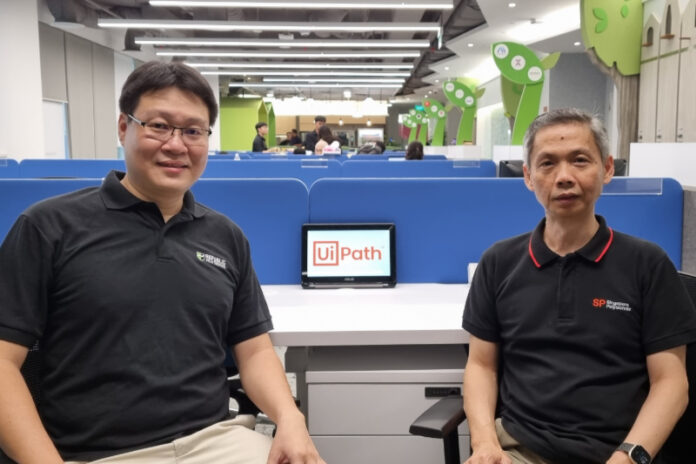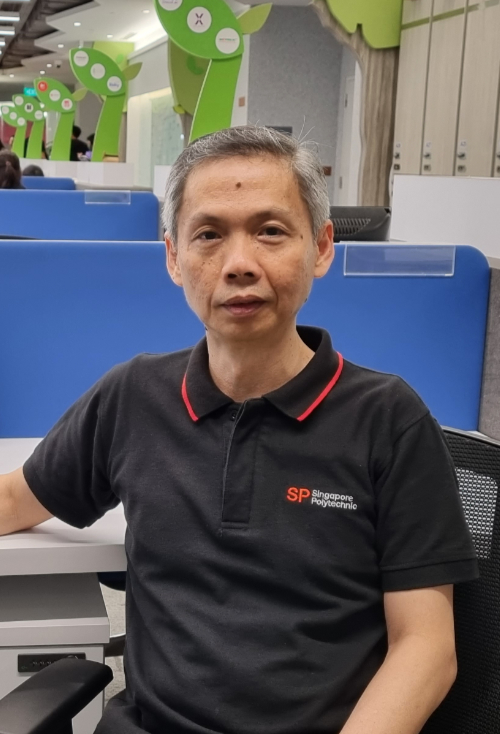
Through automation, what used to be accomplished manually can now be done in seconds, and without human intervention. All of a sudden, an enterprise’s time, money, and personnel can be focused on higher-value activities instead of mundane, repetitive tasks.
However, business needs are continuously outpacing the number of talent available to do the work. As a result, organisations are using every available resource to get their hands on the finite pool of skilled employees out there.
Clearly, the future of automation rests on education, and these two academicians are making sure the future will not run out of talent.

Tang Kah Heong, Educator and RPA Lead at Singapore Polytechnic, and Vincent Lim Boon Yang, Senior Lecturer at Republic Polytechnic, have recently been feted at the UiPath 2022 Visionary Educators Awards for their work. The award aims to recognise distinguished educators who have gone above and beyond to prepare their students for the future of work, and create a positive impact.
To address the current talent shortage, training and upskilling the workforce with in-demand automation skills is crucial. However, according to Tang, only 38% of organisations in Asia-Pacific and Japan are currently running a comprehensive automation training and development plan with a focus on reskilling and upskilling across teams and units.
“This is where education plays a crucial role in nurturing the next generation of automation talent, whether they are students or mid-career professionals looking to build or advance their automation skills. Enterprise partners such as UiPath are important players in this ecosystem,” he remarked.
Tang cites the UiPath Academic Alliance as an example of the software company’s efforts. The program gives students and educators access to free courses and software to begin developing software robots. Moreover, they can also access and network with an active community of global automation professionals and users to learn directly from industry experts.
Intro to automation
While individuals looking to learn robotic process automation (RPA) may soon find that the journey is no walk in the park, several developments are making learning more accessible, especially for non-IT users, Republic Polytechnic’s Vincent Lim noted.
“The good news is that many automation platforms now offer unique low- or no-code capabilities, which brings automation and AI into the hands of more users. Business users can now easily create unique automation bots according to their business needs, using simple drag-and-drop visual interfaces, rather than having to rely on complex programming. Anyone, regardless of their skill level, can now tap into automation to solve their unique business challenge, without putting additional burden on IT and developers,” the educator said.
However, learners with previous knowledge of programming language will have an easier time understanding the coding methods used by automation platforms, Lim added.
As most learners may find it difficult at first to start automation development or conduct troubleshooting on their own, initial mentoring and coaching on a real project is crucial, Singapore Polytechnic’s Tang Kah Heong said.
Organisational readiness

With personnel now trained with the ins and outs of RPA, it is equally important that an organisation possess a positive mindset on the possibilities of automation.
Ideally, a long-term automation roadmap and a top-down holistic strategy in place should be prerequisites to any organisation, said Lim. “Organisations should take an enterprise-wide perspective on automation adoption, and incorporate data, processes, people and technology into the overall roadmap.”
Then, and only then can organisations enhance internal readiness for automation and AI, and realise the full potential of automation.
“In addition to building organisational talent and skills through training and upskilling efforts, organisations should also look at building a centre of excellence that allows them to embed automation effectively into the organisation. This involves clearly defining roles and responsibilities, setting up change management frameworks, as well as identifying performance and productivity metrics and measurement, all which will help the organisation scale automation successfully,” he recommended.
The future of automation
Looking ahead, more and more automation use cases are expected to manifest, powered by AI innovations.
“Process mining, automated testing, and low-code automated app creation are just the beginning. We can expect the combination of AI and automation to continue opening up new possibilities, as new capabilities and new use cases help businesses unlock significant value,” Lim said.
Meanwhile, as enterprises increase their sustainability initiatives, Tang believes automation will play a huge role in the overall ecosystem.
“In every industry, companies are making ESG (environmental, social, and governance) commitments. Yet, many are also facing data and reporting challenges to deliver on these commitments. Many are starting to realise that fulfilling these commitments require intensive data collection and analysis, which can be time-consuming and error prone when done manually,” he observed.
“Automation platforms can help companies monitor and report ESG-related risks across their business portfolios, and track the company’s performance against its key performance indicator targets for ESG. Whether it is tracking progress on environmental targets such as carbon emissions or energy use, or social KPIs such as workplace diversity, automation simplifies the reporting process and makes it easier for companies to meet compliance targets and deliver on their commitments,” the educator concluded.















